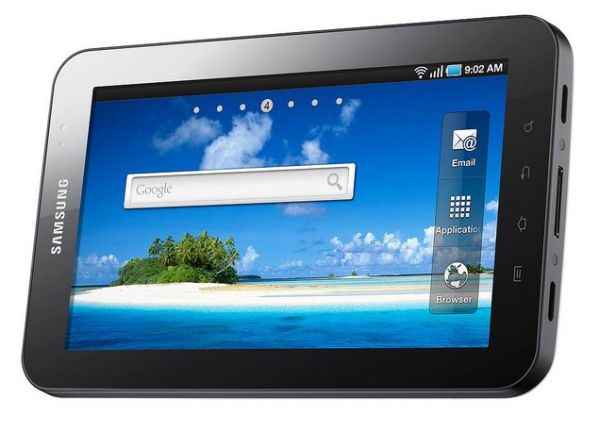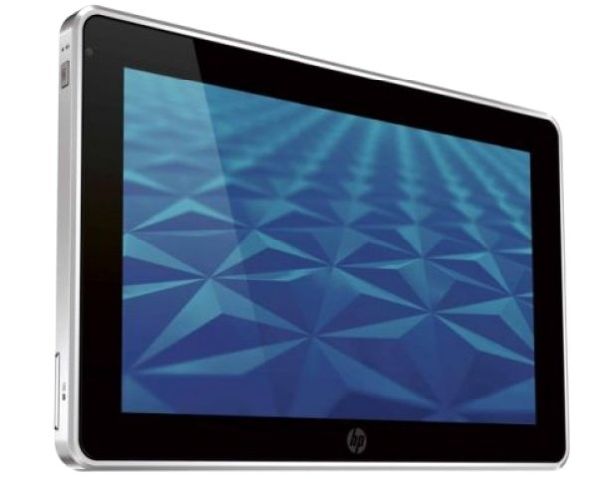Holiday Smartphone Buyer's Guide
by Vivek Gowri on December 4, 2010 5:00 AM EST- Posted in
- Smartphones
- Guides
- Holiday 2010
- Mobile
Tablets

If we’re talking about the tablet space, we pretty much have to start with the iPad. Love it or hate it, you must admit that it is the product that sets the benchmark for the entire flood of tablets releasing over the coming months. Since the uber-hyped tablet released earlier this year, nothing has changed on the hardware front, but the fairly significant iOS 4.2 update released, bringing along with it support for multitasking, homescreen folders, and AirPrint.
I’ve been running the 4.2 RC on the family iPad for some time, and to me, the biggest difference is the multitasking. It makes the iPad significantly more versatile as a device, allowing users to switch between apps seamlessly. It’s the same kind of “intelligent app pausing” that Apple does with the iPhone, so it’s not really multitasking in the true sense of the word, but it works
Either way, the iPad figures to be a real force in the tablet world for the foreseeable future. There’s not much to recommend against it, unless you really hate the iOS platform. If you’re looking to get into tablets, it’s a pretty good place to start. Very well designed, very user friendly, and quickly gaining mainstream popularity. The only hesitation is that Apple probably has a 2nd generation iPad with dual cameras and a faster, A9-based SoC right around the corner, though it could debut any time between January and April.
If you’re unwilling to tie yourself to the iOS/iTunes/App Store triumverate, then you’re in luck, since Android-based tablets seem to be releasing right, left, center, and any other direction you can think of. The one that’s gotten the most press recently is Samsung’s new Galaxy Tab. Built around a 7” WSVGA LCD screen and the same Cortex A8-based Hummingbird processors as the Galaxy S line, the Tab is a bit smaller and a bit more powerful than the iPad. It runs Froyo (which, interestingly enough, is something that the Galaxy S phones can’t claim) and comes with Market preloaded. Considering that Google usually doesn’t allow tablets to come with Market, that’s a pretty big coup for Samsung. It’s available from all four carriers and also as a WiFi-only device, basically mirroring the 16GB iPad’s price points.
If you’re looking to go the WiFi-only route, there are other options from smaller manufacturers that are definitely worth taking a look at. Archos' value priced $299 101 tablet is set to ship with Froyo sometime shortly in the US, and is already shipping in Europe. Another tablet that showed up on multiple Black Friday sale papers was the Viewsonic G Tablet, a 10” Froyo tablet with Nvidia’s elusive Tegra 2 platform underhood. Dual Cortex A9’s, yes pleaaaase. Hardware accelerated 1080p playback on a $399 tablet sounds pretty impressive too, to be honest. Compared to the iPad and the Galaxy Tab, which are basically running on smartphone guts, the Tegra 2-based Android tablets have the potential to really unlock some of the more interesting media playback and gaming uses that the other SoCs simply don’t have the computing horsepower for. Now, the Viewsonic doesn’t get Android Market preinstalled like the Galaxy Tab, but sideloading it onto the device is a pretty painless process. Obviously, going for a more obscure tablet such as the Viewsonic or any of the other lesser-known Android tablets is taking a risk, but in the brief moment I played with it, the Viewsonic felt reasonably well put together and seemed to have CPU performance just this side of the Moorestown tablet we played with at IDF (I only had time to run one benchmark). We have one on the way for review, so we’ll see, but the first impression wasn’t bad.
Like I mentioned earlier, the Viewsonic isn’t the only Tegra 2 tablet in town; Advent’s Vega on sale in the UK for 249 quid, Innovative Converged Devices’ Gemini and Vega are on the horizon, NotionInk is supposedly on track to release their highly touted Adam, and a simple Google search yields a bunch of companies I’ve never heard of (Malata, E-Noa, eLocity) claiming to be readying Tegra 2/Android tablets for release in the near future. Not to forget larger companies that are rumoured or have released prototypes of Tegra 2 tablets, people like Motorola, Dell, HTC, Acer, ASUS, MSI, Compal, Foxconn, Quanta, and Toshiba, amongst others. We will be assaulted by a deluge of Android tablets very soon, so if that’s what you’re looking for, you may be better off waiting until then, especially given that Google has promised to provide a more unified tablet computing experience with Gingerbread, the next revision of Android.
For non-Google or Apple tablets, you’re kind of stuck for the moment. Microsoft made a big fuss about Windows 7-based slate tablets, like the HP Slate 500 and the ExoPC, but thus far Windows tablets have been based on netbook internals (ugh, Atom) and have provided poor battery life and performance. Not a good combination. Also, they tend to be on the slightly expensive side, with the ExoPC starting at $549 (which is decent, considering that comes with 32GB of storage) and the HP Slate starting at a legitimately high $799 pricetag. Unfortunately, Microsoft has not (yet) given any indication that they will be releasing a tablet-specific OS based on Windows Phone 7 and they killed off their very exciting Courier tablet project earlier in the year, so for now, Microsoft figures to be at most a bit player in the internet tablet market. Moving to HP, it is almost inevitable that we will eventually see a WebOS-based tablet similar in size and shape to the Slate, but there is no indication as to when that will happen other than “sometime next year”. RIM has also debuted a 7” tablet, called the PlayBook, with a completely new OS. So there’s a ton of interesting tablets releasing shortly, so unless you’re set on an iPad or a Galaxy Tab, I’d personally recommend waiting.












52 Comments
View All Comments
DigitalFreak - Saturday, December 4, 2010 - link
Forgot to mention that there is also a dock coming, with HDMI out, USB and an Ethernet port.VivekGowri - Saturday, December 4, 2010 - link
You can still sideload apps, so it's not a huge deal. You can seriously just go download the .apk from the internet, toss it onto the SD card and install off there. The problem with that is that some of the apps don't work too well - I couldn't get Angry Birds to run properly for some reason.Just IMO here - the stock software is NOT okay. It's basically ruining the device, for me at least. It's such a slow UI....I can deal with UI skins that don't lag down the system, like on the Galaxy Tab or the HTC Sense stuff, but man, this thing is slow - I've got dual A9's and it feels slower than the freaking ARM11 phones.
XDA is awesome, I've been looking at their section for the G-Tablet recently. I'll probably have a performance preview up within the next couple of days, but the full review is going to have to wait until after the Galaxy Tab review, so I'll probably look into TNT Lite.
The G-Tablet really does look like the hackers dream, but I've got a question, am I the only one that thinks it has a pretty woeful screen (especially next to the iPad)?
strikeback03 - Monday, December 6, 2010 - link
Haven't seen one in person, but based on the preview hands-on over at androidcentral I have to agree, horrid viewing angles on the screen and lag that could be measured in multiple seconds in interacting with the OS. And apparently it was even more unusable with the first shipping software revision, IIRC there have already been updates.jonup - Saturday, December 4, 2010 - link
Guys, while I understand the noise around the flagships of the major phone manufacturers/brands is there a chance that we will see reviews/recommendations for some smaller, lighter and more elegant phones? I just picked up X3-02 and so far I am loving it. (I wish I didn't have to work 60+ hours and getting ready for some finals :( ) I paid for it more than some of your higher end offerings just because I don't want to hoe all the extra weight. Maybe you can review even some Vertu phones!?That said I understand it is a niche market and most people on the street would not care because they have not been bombarded with countless commercials everyday, but for those of us that care about looks, texture and quality of materials, we still want to get a feature rich device as much as the physical dimensions allow for. It will be nice to know how they stack up against the big phones.
p.s. I also prefer Longines to Breitling ;)
DanNeely - Sunday, December 5, 2010 - link
They're less fashionable, but feature phones still make up roughly half the phones sold, so a reasonable case could be made to cover some of the higher end models.G-Man - Saturday, December 4, 2010 - link
"It’d be completely disingenuous if we had a myopic, USA-centric world view, and we’re actively working on getting a more international spread of devices whenever possible that’s of interest to everyone."You have no idea how awesome Anandtech is for realising this (no sarcasm). So many other sites forget this. Thank you.
Hrel - Saturday, December 4, 2010 - link
You guys REALLY need to start getting some Archos hardware in shop to test out.AuDioFreaK39 - Saturday, December 4, 2010 - link
Excellent article Vivek and Brian! I just spotted one apparent issue with a technical specification. On the very last page regarding tablets, the BlackBerry Playbook was announced to feature a 7-inch 1024x600 screen, not a 10-inch screen. Hopefully this can be corrected, thanks in advance.VivekGowri - Sunday, December 5, 2010 - link
Riiiiiight. My bad, thanks for catching that!Galcobar - Saturday, December 4, 2010 - link
Actually, the PlayBook is a 16:9, 7" screen, device itself is 5.1" x 7.6" x 0.4" (130mm x 194mm x 10mm).